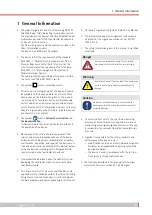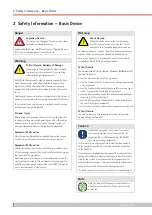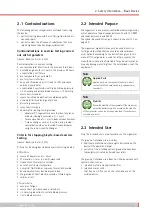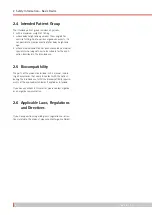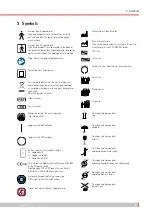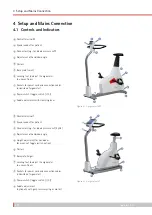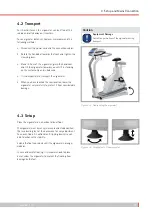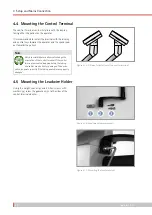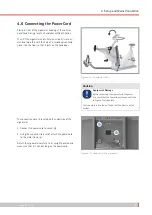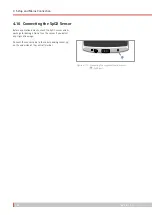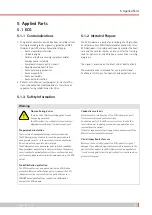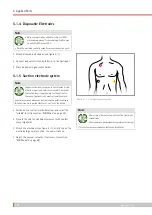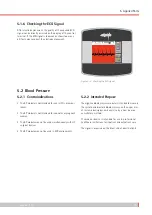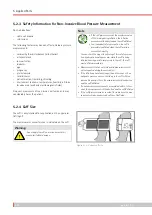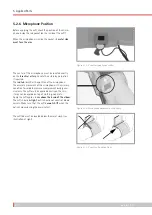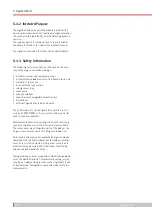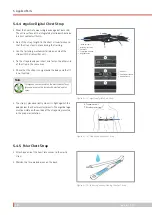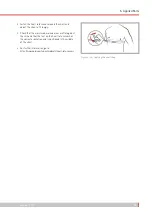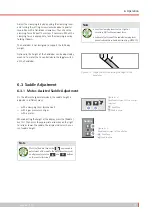
5 Applied Parts
ergoselect 4 / 5
17
5 Applied Parts
5.1 ECG
5.1.1 Contraindications
• The general, absolute contraindications to cardiac stress
testing (according to the ergometry guidelines, DGSP
(German Sports Physicians Association)) apply.
– Acute myocardial infarction
– Unstable angina
– Cardiac arrhythmia causing symptoms and/or
hemodynamic instability
– Symptomatic severe aortic stenosis
– Decompensated heart failure
– Acute pulmonary embolism
– Acute myocarditis
– Acute pericarditis
– Acute aortic dissection
• Patients with physical, psychological, or mental afflic-
tions who cannot be mobilized and are therefore not
capable of using rehabilitation facilities.
5.1.2 Intended Purpose
The ECG module is a device for recording of a single-chan-
nel, bipolar surface ECG (frontal plane) acquired with three
ECG electrodes. It is used to continuously monitor the heart
rate and the cardiac rhythm and to control the training
load for patients in rehabilitation or preventive training
programs.
The signal is acquired on the intact skin of adult patients.
The medical device is intended for use in professional
healthcare institutions for inpatient and outpatient care.
5.1.3 Safety Information
Warning
No monitoring device
There is a risk of lifethreatening patient condi
tions going unnoticed.
The ECG system is not suitable for the electrocar
diographic monitoring of critical care patients.
No pacemaker detection
There is a risk of inadequate therapy and/or overexertion.
The ECG module may continue to count the pacemaker rate
during cardiac arrest or in the presence of some arrhythmias.
Do not rely entirely upon rate meter alarms.
The ECG module has no pacemaker pulse rejection capability.
Keep pacemaker patients under close surveillance. The primary
user is required to periodically assess the current exertion level
by referring to independent, subjective parameters (e.g., the RPE
value).
No defibrillation protection
The ECG module is not an applied part with defibrillation
protection. Before a defibrillation pulse is released, the ECG
leadwires must be removed from the patient because it
CANNOT be excluded that they conduct the defibrillation
energy to the ECG module.
Conductive materials
Electric shocks or malfunction of the ECG system may result
from contact with conductive materials.
Conductive parts of the ECG system must not touch other
conductive parts, including ground, during application to or
removal from the patient.
Follow the sequence of steps for application and removal of the
ECG system described in this manual.
Visual inspection before use
Before each use, visually inspect the ECG system for signs of
damage. If you detect damage that may result in a hazard to the
patient or the operator, the ECG system must be repaired before
it can be used again. Follow the instructions for visual inspection
given in this manual.
Summary of Contents for ergoselect 4
Page 1: ...ergoselect 4 5 Ergometer Operator s Manual 201000433000 Version 2021 06 01 Rev 04 English...
Page 2: ......
Page 95: ......



